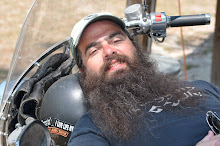Today we discussed water underground and put our notes and vocabulary on p. 25 of our notebooks. Topics covered were the water table, and how the amount of precipitation that an area receives affects the level of the water table. To get to the aquifers, water must travel through dirt and rock. Water's ability to move through the ground depends on the porosity and permeability of the materials in that area.
Students received a hand out that shows a cross section of the water table and how wells must reach below the water table in order to be useful. This should also be attached to p. 25 of the notebook.
After the quiz tomorrow, we will finish up discussion underground water by finishing discussing about wells and underground erosion and how water affects caves and can create sinkholes.
Several students wanted links to the on-line textbook so they could review for tomorrow's quiz. Here is the information they need. This is permanently on my school webpage under "useful links."
Science Text Book On-line http://my.hrw.com/
Students received a hand out that shows a cross section of the water table and how wells must reach below the water table in order to be useful. This should also be attached to p. 25 of the notebook.
After the quiz tomorrow, we will finish up discussion underground water by finishing discussing about wells and underground erosion and how water affects caves and can create sinkholes.
Several students wanted links to the on-line textbook so they could review for tomorrow's quiz. Here is the information they need. This is permanently on my school webpage under "useful links."
Science Text Book On-line http://my.hrw.com/
Students can access our textbook at home. There are a number of links to interactive sites and objects as well as some links to reading for better understanding and going beyond what we do in class. I have it set to open in a new browser window. If you are having problems getting the page to show, you may have to temporarily allow pop-ups for the page to show up.
username: student9490 password: j9m7j
username: student9490 password: j9m7j
